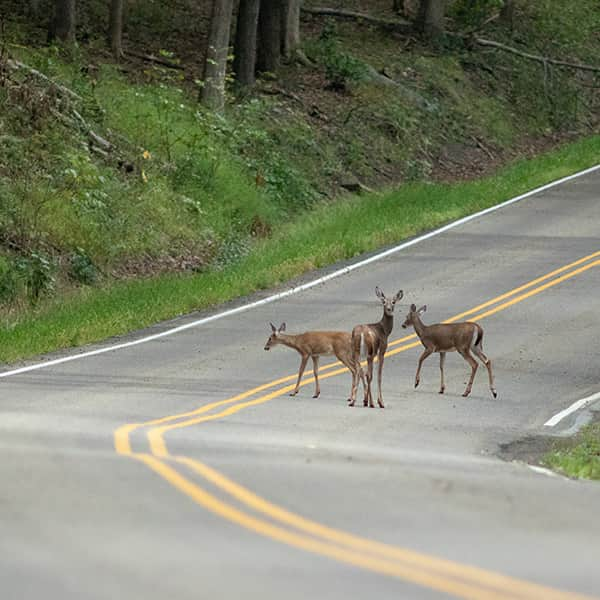
Although you and your fellow drivers are trusted to know and understand the rules of the road, wildlife species have no idea what road safety even means. More people kill wildlife with their cars than during hunting or in any other way, and the results are often devastating to all involved parties. Read on to learn some strategies about how to handle wildlife on the road.
What Animals Are at Risk
What animals may appear on the road depends upon what area of the country you live in. However, some of the most common animals that venture onto roadways include deer, skunks, elk, foxes, and birds. Unfortunately, some wildlife populations cannot survive the loss of additional lives and vehicles are putting certain species at risk of extinction.
Car and Wildlife Collisions
Statistics show that a car collision involving wildlife occurs every 39 minutes and that one out of every 17 car collisions involves wandering wildlife animals. Hundreds of motorists die each year due to wildlife collisions, and thousands of drivers encounter costly auto damage repairs as well. According to State Farm estimates, there are about 1.5 million animal-car accidents each year that cause more than 10,000 injuries, 150 deaths, and an average of $2,500 in property damage.
How You Can Prevent Wildlife Collisions
Slow down your speed at both dusk and dawn, which are the times that wildlife tends to be most active around roadways. Dawn and dusk are the times that many wildlife species, including deer, like to venture out of their safer habitats to find food. Keep an eye out for glowing eyes that peer through the brush alongside roads and be alert as you drive through wilderness areas. Pay attention to wildlife crossing signs when you see them and scan the road from side to side, especially when you encounter wooded areas or areas near water sources. Know when the peak seasons for wildlife in your area occur as you set out on the road in any given season. For example, autumn is a peak season for deer-car crashes because this is the time that deer mate and also when hunters come out. Use your high-beam headlights as much as you can when driving at night to light up the edges of the road you're driving on. If you see wildlife in the distance, try flashing your brights on and off to encourage them to scurry away and off the road. If you have time to brake before hitting an animal, slow down and tap your brakes to warn drivers behind you that you are trying to come to a stop. If there is absolutely no one behind you on the road, you can apply the brakes with more force. Ultimately, if a collision is not avoidable, don't swerve off the road to avoid an animal. You will likely be putting yourself and your passenger at a greater risk by doing so. Try to stay calm and maintain control of the car as much as possible. After any type of wildlife encounter, make sure to call in the accident to the local police and to your insurance company. A seat belt can save your life in these types of situations, so always remember to buckle up before you drive.

